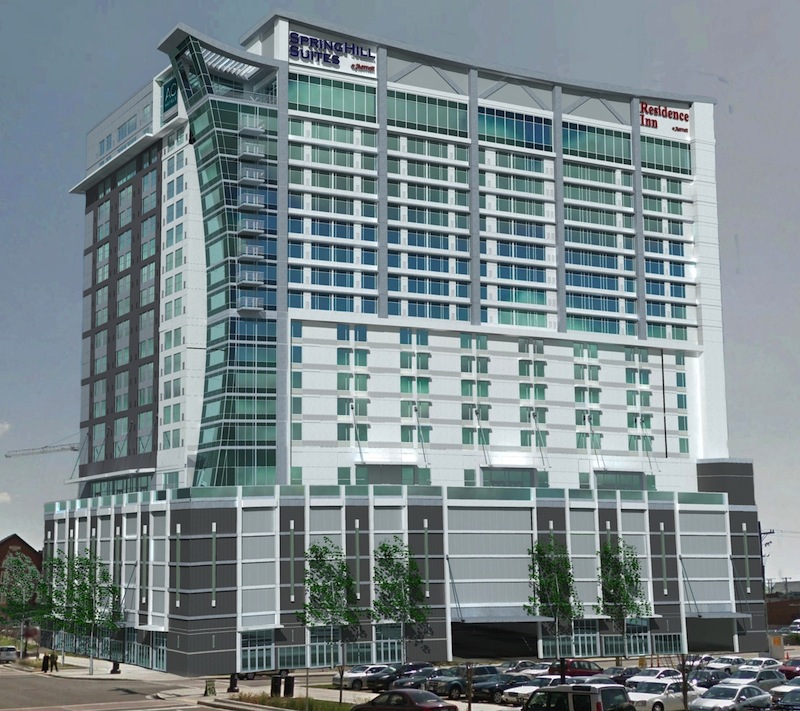Slower growth in the general economy, brought on by seemingly mounting national and international vulnerabilities, is putting downward pressure on the construction industry, whose sectors expanded last year by 20% or more but are moderating to single-digit growth levels.
That’s the viewpoint of the American Institute of Architects’ semiannual Consensus Construction Forecast Panel, which expects building construction spending to increase by just under 6%, its growth rate through the first half of the year, through 2017.
To view an interactive chart comparing the forecasts from the seven market watchers on the Panel, click here.
AIA puts out its Consensus to project business conditions for the coming 12 to 18 months. Kermit Baker, Hon. AIA, the Institute’s chief economist, notes that several factors—job growth, consumer confidence, low interest and inflation rates, and a trending single-family housing market—offer positive economic signs.
Good reception is also coming from AIA’s Architectural Buildings Index, a historically reliable indicator of future spending in the nonresidential sector. The latest data indicate that architectural firms are increasing their backlog of project activity.
Still, there is a growing list of issues “that threatens to unhinge this economic expansion, both national and international,” Baker writes.
These include:
•A weak manufacturing sector, which has declined 13 of the past 17 months dating back to the beginning of 2015.
•Sagging international economies that could diminish U.S. exports. China, Brazil, and Russia “continue to face difficulties,” observes Baker. And the U.K.’s recent split from the European Union could instigate more restrictive trade policies. On the other hand, a stronger U.S. dollar provides incentives for increasing imports.
•The upcoming presidential election, and the “unusually high” level of uncertainty regarding post-election policies.
Baker cites a recent Urban Land-generated consensus forecast of real estate trends that suggests “we are in the latter stages of this current real estate cycle,” where vacancy rates are expected to increase, and rent increases to slow, for multifamily housing and hotel rooms through 2017 and 2018.
Spending on hotel construction is on pace to increase by a still-healthy 7.6% in 2017, but down from 17.9% in 2016, according to AIA’s consensus forecast. Office space spending will grow by 14.7% this year, but only by 7.5% next.
The institutional side is expected rise by 6.7% this year and next. Healthcare facilities spending should increase to 5% next year, from 2.3% in 2016. Public Safety is expected to recover from a 3.7% decline to a 3.3% gain next year. Spending on Education construction, one of the industry’s big tickets, should see a slight downtick in growth, to 6.3% in 2017 from 6.5% this year.
Related Stories
Apartments | Jan 26, 2024
New apartment supply: Top 5 metros delivering in 2024
Nationally, the total new apartment supply amounts to around 1.4 million units—well exceeding the apartment development historical average of 980,000 units.
Self-Storage Facilities | Jan 25, 2024
One-quarter of self-storage renters are Millennials
Interest in self-storage has increased in over 75% of the top metros according to the latest StorageCafe survey of self-storage preferences. Today, Millennials make up 25% of all self-storage renters.
Industry Research | Jan 23, 2024
Leading economists forecast 4% growth in construction spending for nonresidential buildings in 2024
Spending on nonresidential buildings will see a modest 4% increase in 2024, after increasing by more than 20% last year according to The American Institute of Architects’ latest Consensus Construction Forecast. The pace will slow to just over 1% growth in 2025, a marked difference from the strong performance in 2023.
Adaptive Reuse | Jan 23, 2024
Adaptive reuse report shows 55K impact of office-to-residential conversions
The latest RentCafe annual Adaptive Reuse report shows that there are 55,300 office-to-residential units in the pipeline as of 2024—four times as much compared to 2021.
Construction Costs | Jan 22, 2024
Construction material prices continue to normalize despite ongoing challenges
Gordian’s most recent Quarterly Construction Cost Insights Report for Q4 2023 describes an industry still attempting to recover from the impact of COVID. This was complicated by inflation, weather, and geopolitical factors that resulted in widespread pricing adjustments throughout the construction materials industries.
Multifamily Housing | Jan 15, 2024
Multifamily rent growth rate unchanged at 0.3%
The National Multifamily Report by Yardi Matrix highlights the highs and lows of the multifamily market in 2023. Despite strong demand, rent growth remained unchanged at 0.3 percent.
Apartments | Jan 9, 2024
Apartment developer survey indicates dramatic decrease in starts this year
Over 56 developers, operators, and investors across the country were surveyed in John Burns Research and Consulting's recently-launched Apartment Developer and Investor Survey.
Self-Storage Facilities | Jan 5, 2024
The state of self-storage in early 2024
As the housing market cools down, storage facilities suffer from lower occupancy and falling rates, according to the December 2023 Yardi Matrix National Self Storage Report.
Urban Planning | Dec 18, 2023
The impacts of affordability, remote work, and personal safety on urban life
Data from Gensler's City Pulse Survey shows that although people are satisfied with their city's experience, it may not be enough.
MFPRO+ News | Dec 11, 2023
U.S. poorly prepared to house growing number of older adults
The U.S. is ill-prepared to provide adequate housing for the growing ranks of older people, according to a report from Harvard University’s Joint Center for Housing Studies. Over the next decade, the U.S. population older than 75 will increase by 45%, growing from 17 million to nearly 25 million, with many expected to struggle financially.

















